Welcome to our blog post on “Common Mistakes to Avoid in EV Charger Installation – Tips for a Smooth Home Charging Station Setup.” If you’ve recently made the switch to an electric vehicle, congratulations! With lower carbon emissions and cheaper operating costs, an EV is a wise choice for the environment and your wallet. But to maximize the convenience and efficiency of owning an electric vehicle, it’s essential to have a home charging station installed in your garage.
Installing a home charging station for your EV may seem daunting, but with the proper knowledge and guidance, it can be a smooth and hassle-free experience. However, there are some common mistakes that many people make during the installation process, which can lead to unnecessary complications and delays.
In this blog post, we will discuss the most common mistakes to avoid in EV charger installation so you can confidently set up your home charging station. Following these tips will ensure a seamless and efficient process, allowing you to enjoy the convenience of charging your EV at home without any hassles.
So, let’s dive into the most common mistakes to avoid when installing a home charging station for your electric vehicle!
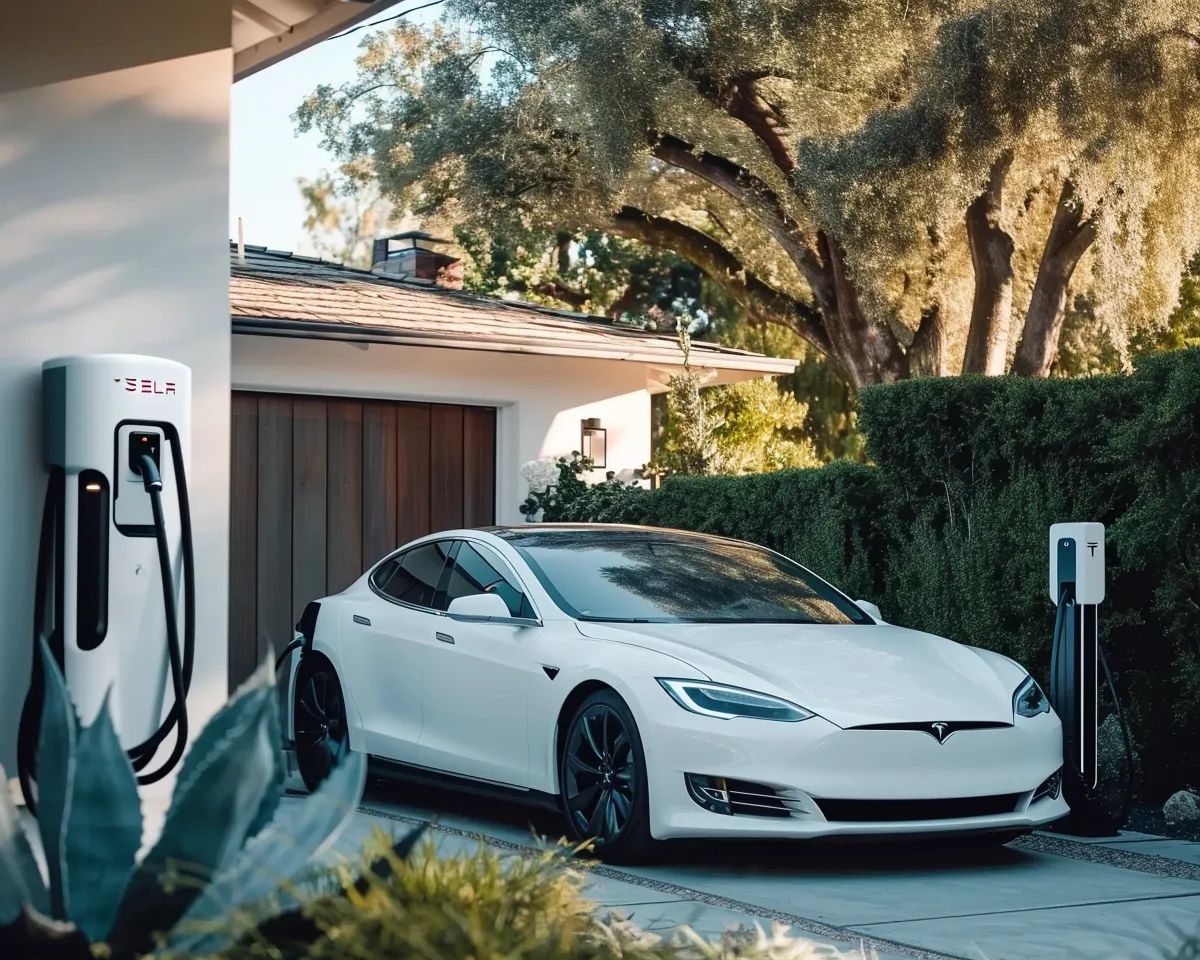
Planning Ahead: Ensuring Your Electrical System Can Handle an EV Charger Installation
Proper planning is essential When installing a home charging station for your electric vehicle (EV). By considering your electrical system’s capacity and capabilities beforehand, you can avoid common mistakes leading to performance issues and potential safety hazards. Here are some key factors to keep in mind:
Check Your Electrical System’s Capacity
Before diving into the installation process, it’s crucial to assess whether your current electrical system can handle the additional load of an EV charger. Consider the following:
- The amperage rating of your main electrical panel
- The available capacity in your electrical service line
- The compatibility of your circuit breaker
If your electrical infrastructure does not have sufficient capacity, upgrading your panel or service line may be necessary to support the EV charger’s demands.
Consult with a Qualified Electrician
While you may be tempted to tackle the installation yourself, hiring a qualified electrician specialized in EV charger installations is highly recommended. A professional electrician can assess your electrical system and provide expert guidance on the best action. They will ensure that your installation adheres to local regulations and safety standards.
Consider Future Expansion
If you plan to add more electric vehicles to your household in the future, it’s crucial to account for this when installing your home charging station. You can avoid costly modifications by installing the necessary infrastructure now, such as upgrading your electrical panel and circuitry.
Proper Grounding and Bonding
Proper grounding is essential to protect your EV charger and electrical system from electrical faults and potential hazards. Ensure your electrician installs a separate ground wire and that the charger is adequately bonded to prevent electric shocks.
Upgrade Your Electrical Panel if Needed
Suppose your electrical panel is outdated or cannot handle the additional load. In that case, it’s vital to consider upgrading to a larger panel that can support your home charging station. This will ensure that your EV charger operates efficiently and safely.
By avoiding these common mistakes in EV charger installation, you can ensure a smooth and hassle-free experience while maximizing the performance and safety of your home charging station. Always consult with professionals and prioritize proper planning to enjoy the benefits of owning an electric vehicle.
Selecting the Right EV Charger: Understanding the Power and Compatibility Requirements
Once you have confirmed that your electrical system can handle an EV charger installation, it’s time to select the correct charger for your electric vehicle. This step is crucial because choosing the wrong charger can lead to compatibility issues and performance problems. To ensure a smooth charging experience, here are some common mistakes to avoid when selecting an EV charger:
Ignoring Power Requirements:
It’s essential to consider the power requirements of your electric vehicle before purchasing an EV charger. Different cars have varying charging speeds and power capabilities. Make sure to match the charger’s power output to your vehicle’s maximum charging capacity to avoid underperformance or overloading the charger.
Neglecting Compatibility:
Not all EV chargers are compatible with every electric vehicle. Some chargers may use a specific charging protocol not supported by your car. Research your vehicle’s compatibility requirements and choose a certified charger to work with your make and model. Standard charging protocols include SAE J1772, CCS, CHAdeMO, or Tesla Supercharger.
Forgetting the Future:
Future-proofing your EV charger installation is crucial, especially if you plan on owning multiple electric vehicles or the charging technology evolves. Select a charger that supports expandability or can accommodate faster charging speeds in the future. Investing in a charger that can grow with your needs is better than replacing it in a few years.
Neglecting Additional Features:
While the primary function of an EV charger is to charge your vehicle, some chargers come with additional features that can enhance your charging experience. Look for features like Wi-Fi connectivity for remote monitoring, smartphone apps for scheduling and tracking charging sessions, and home energy management systems integration. These extra features can provide convenience and improve your overall EV charging experience.
By avoiding these common mistakes when selecting an EV charger, you can ensure a seamless charging experience and maximize the efficiency of your home charging station.
Not Neglecting Permits and Inspections: Navigating the Legalities of Installing a Home Charging Station
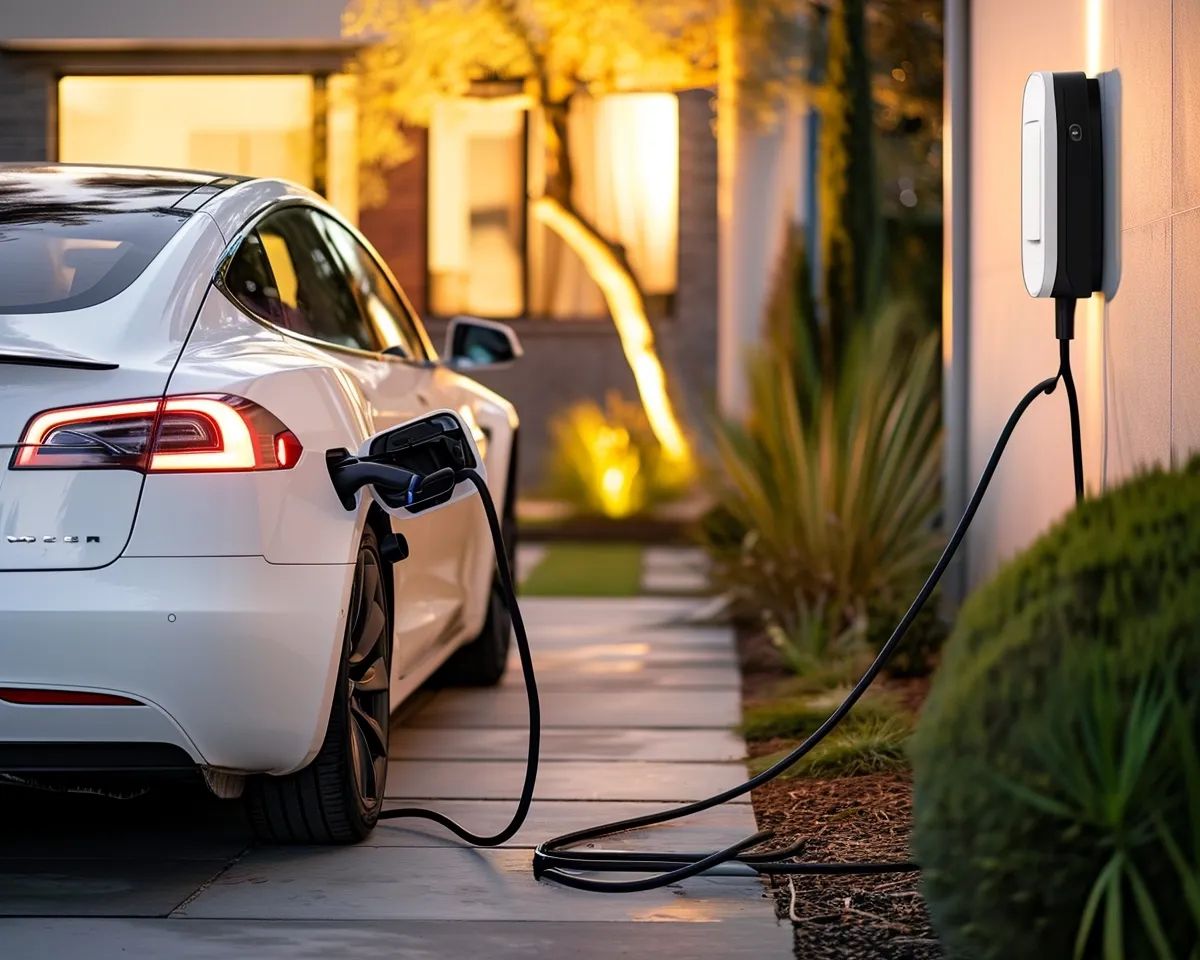
When installing a home charging station for your electric vehicle (EV), it’s essential not to overlook the required permits and inspections. Navigating the legalities and ensuring compliance with local regulations is crucial to avoid potential issues. Here are some common mistakes to avoid when it comes to permits and inspections:
Not researching local regulations
Each jurisdiction may have different regulations regarding home EV charger installations. Before beginning any work, it’s essential to research your local building codes and zoning ordinances. Some areas might require special permits or have specific installation guidelines. By familiarizing yourself with the rules, you can ensure that your installation meets all requirements, avoiding penalties and legal complications.
Skipping the permit application process
Obtaining the necessary permits for your home charging station is vital. It’s tempting to skip this step or assume it’s unnecessary, but doing so can have significant consequences. Permits ensure that the installation is done correctly and meets safety standards. Additionally, your insurance company may require proof of a license for coverage. Failure to obtain the necessary permits puts you at risk and jeopardizes the safety of your property and fellow residents.
Not scheduling inspections
After installing your home charging station, scheduling inspections per local requirements is crucial. Inspections help verify that the installation was done correctly, reducing the risk of electrical hazards and ensuring the safety of your EV charging system. Skipping inspections may violate local regulations and void any warranties or insurance coverage you have for your charger.
Using an unqualified electrician
Working with a qualified electrician is essential to ensure compliance with local regulations and safety standards. Hiring an unqualified electrician might result in a subpar installation that fails to meet code requirements. Always look for licensed and experienced electricians who are familiar with EV charger installations and have a track record of performing quality work.
By avoiding these mistakes and carefully navigating the legalities, you can ensure a smooth and trouble-free installation process for your home charging station. Remember, compliance with permits and inspections ensures your safety, protects your investment, and provides peace of mind.
Hiring a Qualified Electrician: Avoiding DIY Mishaps and Ensuring a Safe Installation
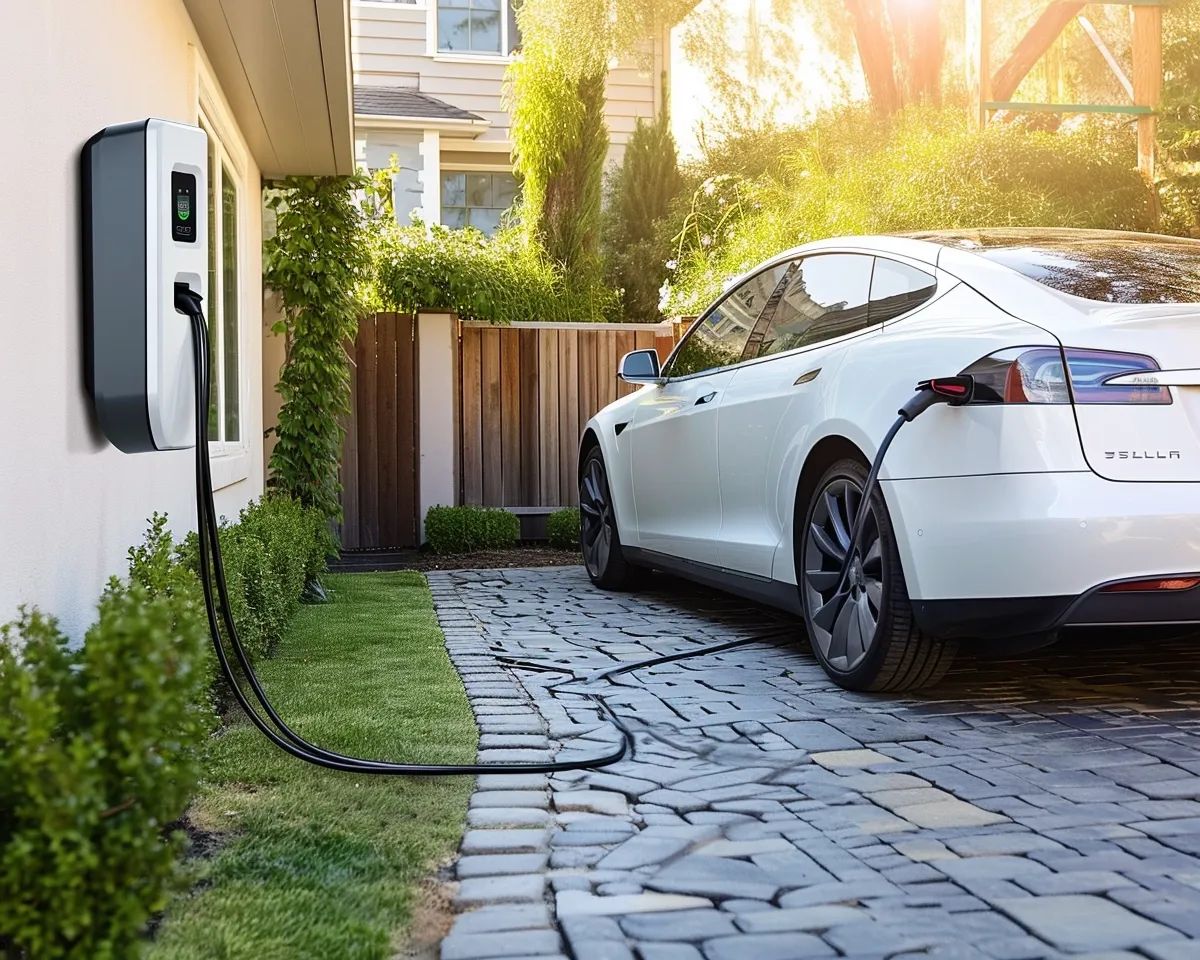
When installing a home charging station for your electric vehicle, hiring a qualified electrician is one of the most critical steps. While you may feel confident in your DIY skills, attempting to handle the electrical work yourself can lead to costly mistakes and potentially dangerous situations. Here are some reasons why hiring a professional electrician is crucial for a safe and successful EV charger installation:
Expertise and Experience
Electricians have the knowledge and expertise to handle complex electrical systems and ensure proper installation. They understand the safety requirements and building codes associated with EV charger installations. By hiring a qualified electrician, you can trust that the job will be done right the first time.
Evaluating Your Electrical System
Professional electricians will evaluate your existing electrical system to determine if it can handle the additional load of an EV charger. They will check your electrical panel, wiring, and circuits to ensure they are up to code and have the capacity to support the charger. This evaluation helps prevent overloading or damaging your home’s electrical system.
Permitting and Inspections
Another benefit of hiring an electrician is their knowledge of local permitting and inspection requirements. They will handle the necessary paperwork and ensure your installation meets all legal and safety standards. Skipping permits and inspections can result in fines and void your insurance coverage.
Guaranteed Safety
Working with electricity can be dangerous, and mistakes can have severe consequences. Hiring a professional electrician eliminates the risk of electrical shocks, fires, or damage to your vehicle. They follow strict safety protocols, use proper equipment, and adhere to industry standards during the installation.
Remember, installing a home charging station involves working with high-voltage electricity, and it’s not a task to be taken lightly. Hiring a qualified electrician can avoid common DIY mistakes and ensure a safe and efficient EV charger installation.
Proper Placement: Optimizing the Location for Efficiency and Convenience
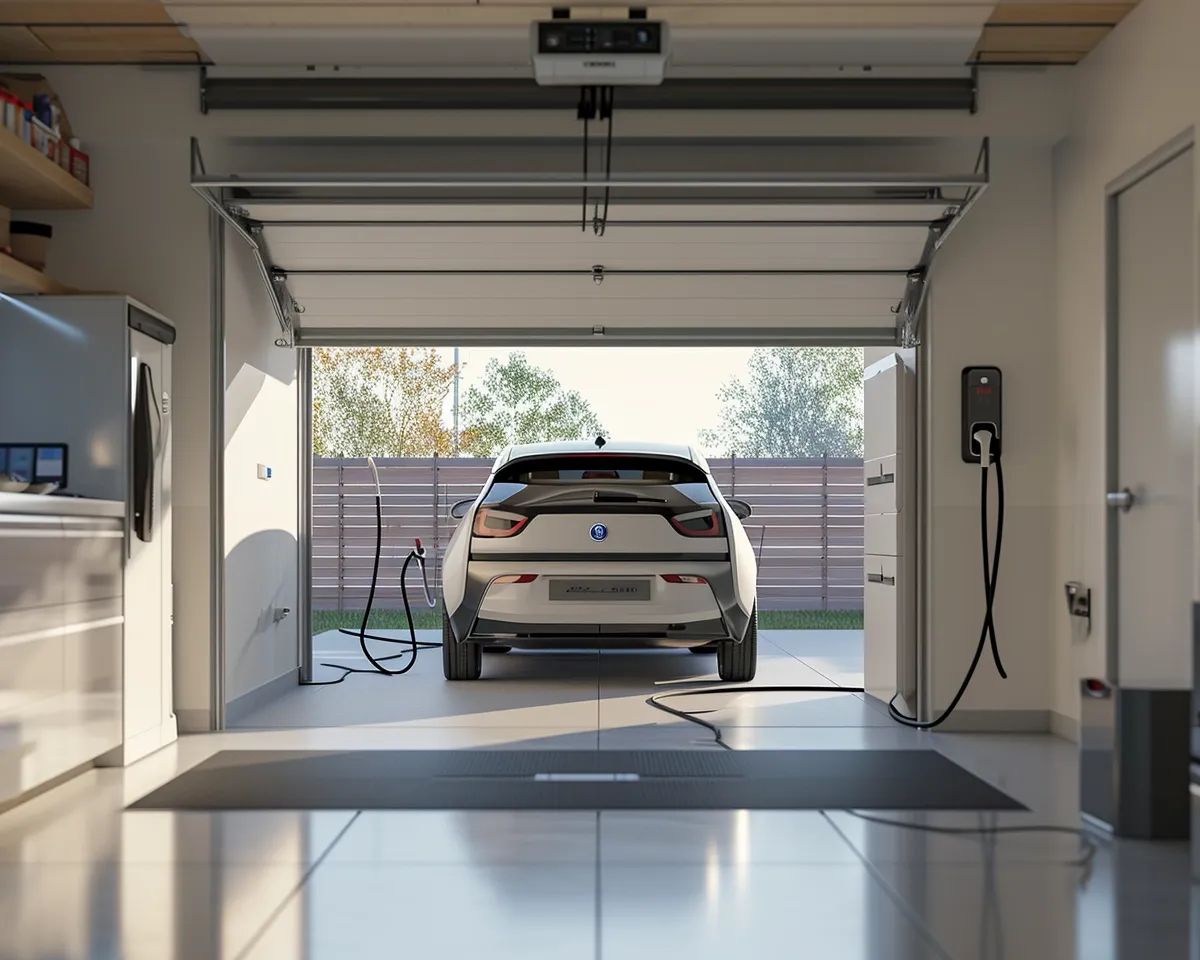
When installing a home charging station for your electric vehicle (EV), one of the critical factors to consider is the proper placement of the charging unit. Finding the right location can significantly impact your EV charger’s efficiency, convenience, and effectiveness. Here are some common mistakes to avoid when optimizing the placement of your home charging station:
Avoiding Long Cable Runs:
Installing your home charging station close to your EV’s parking spot is crucial to avoid long cable runs. Long cable runs can lead to voltage drop and a decreased charging speed. Having a charging station located near your vehicle not only makes charging more convenient but also ensures that you can achieve optimal charging speeds.
Considering Weather Conditions:
Consider your area’s weather conditions when choosing your charging station’s location. Extreme heat or cold can affect the performance and lifespan of your EV charger. Installing the charging unit in a garage or under some form of protection is recommended to shield it from harsh weather elements and prolong its longevity.
Ensuring Proper Ventilation:
EV chargers generate heat during the charging process, so it’s essential to provide proper ventilation to prevent overheating. Avoid placing your charging station in an enclosed space without adequate airflow. Ensure enough space around the unit to dissipate heat and maintain optimal functionality.
Considering Future Expansion:
While installing your home charging station, it’s essential to think ahead and consider the potential need for multiple EVs in the future. Evaluate the available space and plan for additional charging units if needed. This foresight will save you from the hassle of installing new electrical wiring and infrastructure later on.
Considering Aesthetics:
While function and practicality are crucial, don’t overlook the aesthetics of your charging station installation. Opt for a location that blends well with your garage or exterior of your home. Choose a spot that minimizes visual clutter and maintains the overall appeal of your property.
By avoiding these common mistakes and strategically placing your home charging station, you can ensure a convenient and efficient charging experience for your electric vehicle. Take the time to assess your specific needs, consider future expansion, and consult with a qualified electrician to make the most out of your EV charger installation.
Ignoring Future Expansion: Preparing Your Electrical System for Multiple Electric Vehicles

Investing in an electric vehicle (EV) charging station for your home is a wise decision. However, many homeowners make the common mistake of not considering future expansion when installing their EV chargers. By failing to prepare your electrical system for multiple electric vehicles, you may encounter several issues down the line.
Why Plan for Future Expansion?
As electric vehicles continue to gain popularity, it’s essential to anticipate the possibility of owning multiple EVs. Taking a proactive approach during the initial installation can save you time, money, and inconvenience later.
How to Prepare Your Electrical System
Here are some crucial steps to follow to avoid the mistake of ignoring future expansion:
- Consult with a Qualified Electrician: A professional electrician with experience in EV charger installations can assess your current electrical system’s capacity and make recommendations for future-proofing.
- Upgrade Your Electrical Panel: To accommodate multiple EVs, your electrical panel may need upgrading to handle the additional load. Investing in a panel with extra capacity will ensure sufficient power supply for various chargers.
- Consider Conduit and Wiring: Installing a conduit and wiring that can support additional circuits for future EV chargers will save you from the hassle of retrofitting later. It’s better to install extra capacity now than tearing up your walls down the line.
- Plan for Additional Electric Vehicle Supply Equipment (EVSE): When installing your initial EV charger, make sure you have enough room for multiple charging stations in the future. Consider factors like available wall space and proximity to the electrical panel.
The Benefits of Future Expansion Planning
By preparing your electrical system for multiple electric vehicles, you’ll enjoy a range of benefits:
- Cost Savings: Installing the necessary infrastructure upfront can save you money on future installations.
- Convenience: Having multiple charging stations readily available at your home will make it easier to charge multiple vehicles simultaneously.
- Resale Value: A home with future expansion capabilities for EV charging may appeal to potential buyers and increase your property’s value.
Don’t make the mistake of ignoring future expansion when installing your EV charger. Take the time to plan and prepare your electrical system for multiple electric vehicles, and you’ll be well-prepared for the future.
Neglecting to Upgrade Your Electrical Panel: Ensuring Adequate Power Supply for Your EV Charger
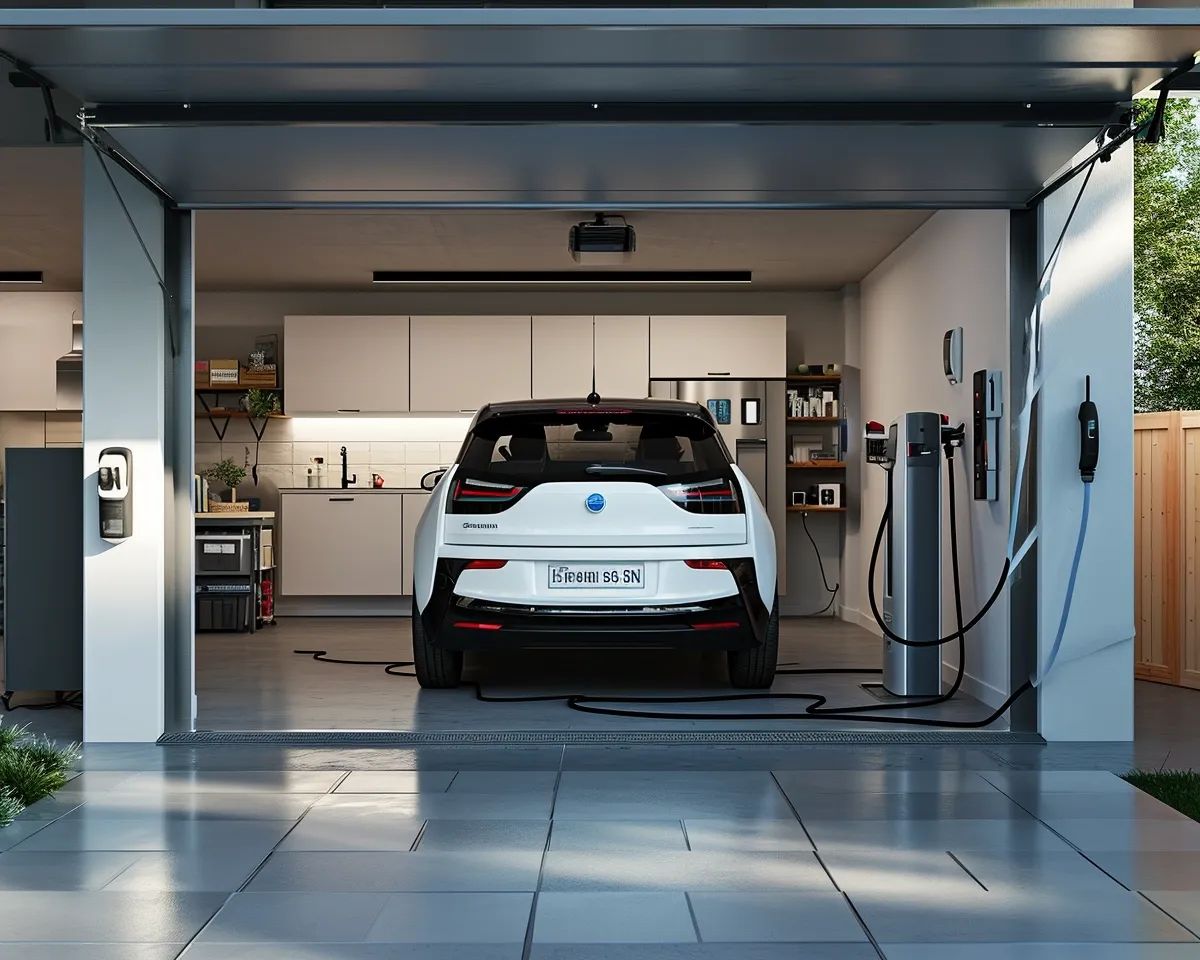
When it comes to installing a home charging station for your electric vehicle (EV), there are several common mistakes that many people make. One of the most crucial mistakes to avoid is neglecting to upgrade your electrical panel to ensure an adequate power supply for your EV charger.
The Importance of Upgrading Your Electrical Panel
Upgrading your electrical panel is vital for a seamless and efficient charging experience. Here’s why:
- Power Capacity: Electric vehicle chargers require significant power to operate effectively. If your electrical panel is outdated or unable to support the high power requirements of your EV charger, you may experience frequent circuit overloads or slow charging speeds.
- Safety: An overloaded electrical panel can pose a severe safety hazard, increasing the risk of electrical fires or damage to your home’s electrical system. Upgrading your panel ensures that it can handle the increased power demands of your EV charger without compromising safety.
- Future-Proofing: Investing in an electrical panel upgrade accommodates your current needs and prepares your home for future advancements in EV technology. Upgrading now allows you to easily add additional charging stations or accommodate the charging needs of multiple EVs in the future.
Consulting with a Qualified Electrician
When considering an electrical panel upgrade, consulting with a qualified electrician specializing in EV charger installations is crucial. They will assess your current electrical system, calculate the required power capacity, and determine if an upgrade is necessary.
During the consultation, your electrician may consider factors such as:
- The existing capacity of your electrical panel
- The power requirements of your chosen EV charger
- The electrical load of your home’s appliances and devices
- Potential future electrical demands
Based on their assessment, the electrician will recommend whether you need a panel upgrade and provide you with options to ensure your electrical system can handle the increased load of an EV charger.
Skimping on Electrical Wiring: Avoiding Performance Issues and Potential Safety Hazards
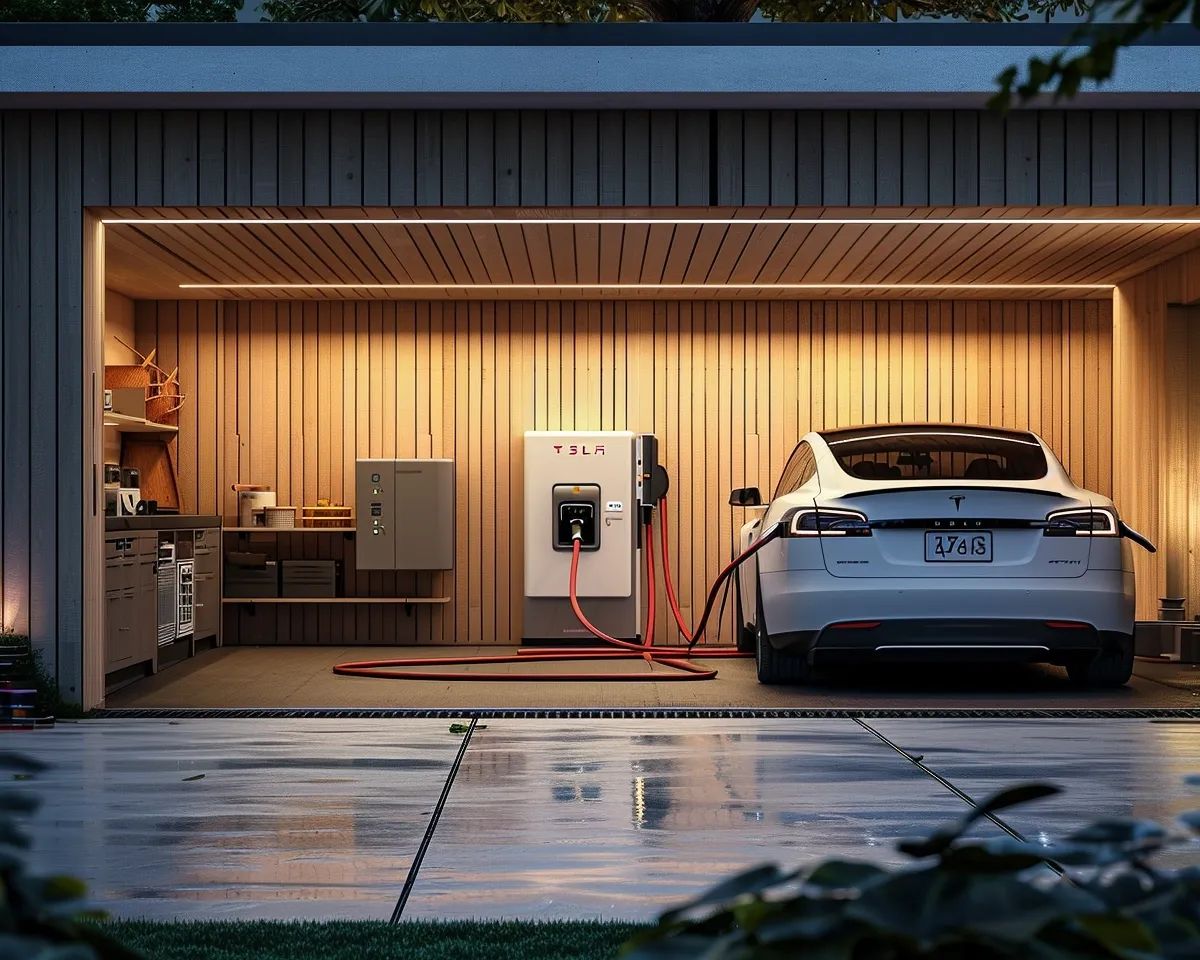
When installing a home charging station for your electric vehicle (EV), one common mistake that homeowners make is skimping on electrical wiring. While cutting corners and saving some money may be tempting, skimping on electrical wiring can lead to performance issues and potential safety hazards. To ensure a reliable and safe charging experience, it’s essential to choose the correct wiring and properly install it.
Why is electrical wiring necessary for EV charger installation?
The electrical wiring plays a critical role in the proper functioning of your EV charger. It carries the electrical current from your home’s electrical panel to the charging station. If the wiring is insufficient or incorrectly installed, it can result in several issues:
- Reduced charging speed: Inadequate wiring can limit the power flow to your EV charger, leading to slower charging times. This can be frustrating, mainly if you rely on your EV for daily commuting or long trips.
- Overheating and potential fire hazards: Insufficient wiring can cause overheating due to increased resistance. This can be dangerous and potentially lead to electrical fires.
- Damage to electrical components: Inadequate wiring can put additional strain on your EV charger and other electrical components, resulting in premature wear and potential damage.
How to avoid skimping on electrical wiring?
To ensure a safe and efficient installation of your home charging station, here are a few steps to follow:
- Please consult with a qualified electrician: It is always recommended to seek professional help from a qualified electrician specializing in EV charger installations. They will assess your electrical system’s capacity, determine the appropriate wiring size, and ensure compliance with local electrical codes.
- Choose the right wiring size: Depending on the power requirements of your EV charger, your electrician will recommend a suitable wiring size to handle the load. Undersized wiring can lead to voltage drops and performance issues.
- Use high-quality materials: Invest in high-quality wiring and electrical components to ensure reliability and safety. Reducing costs using subpar materials may lead to future issues and costly repairs.
- Follow installation guidelines: Ensure the wiring is installed correctly according to the manufacturer’s instructions and local electrical codes. This includes proper grounding, adequate conduit, and secure connections.
By avoiding skimping on electrical wiring, you can ensure a seamless charging experience for your electric vehicle. Don’t compromise on safety and performance – invest in the right electrical wiring for your home charging station.
Overlooking Proper Grounding and Bonding: Ensuring Electrical Safety for Your Home Charging Station
Installing a home charging station for your electric vehicle (EV) can provide convenience and peace of mind, but it is crucial to prioritize safety throughout the process. Selecting the correct charger and hiring a qualified electrician are vital steps. One common mistake to avoid is overlooking proper grounding and bonding.
Why is Grounding and Bonding Important?
Grounding and bonding are critical in electrical systems; your home charging station is no exception. Here’s why:
- Electrical Safety: Proper grounding helps prevent electrical shock by providing a safe path for dissipating stray currents. Bonding ensures that electrical components are connected to the ground to minimize the risk of electrical faults or static discharge.
- Protection Against Surges: Grounding protects your charging station and other electrical equipment from power surges that can occur due to lightning strikes or faults in the electrical system.
- Compliance with Electrical Codes: Following grounding and bonding guidelines ensures that your installation meets the National Electrical Code (NEC) requirements and local regulations.
Common Mistakes to Avoid
Here are some common errors to steer clear of when it comes to grounding and bonding your home charging station:
- Inadequate Grounding: Failing to ground your charging station properly can lead to electrical hazards and void manufacturer warranties. Ensure your electrician installs an appropriate grounding rod or utilizes existing grounding systems.
- Poor Bonding Connections: Improper connections between electrical components can prevent adequate grounding and bonding. Ensure your electrician uses appropriate bonding jumpers and connects all metal parts to the grounding system.
- Ignoring Ground Fault Circuit Interrupter (GFCI) Protection: GFCI protection is essential for safety. Ensure that your charging station and associated circuits are installed with GFCI breakers or outlets to detect and respond to ground faults quickly.
The Bottom Line
Proper grounding and bonding are crucial for electrical safety when installing a home charging station. Ensure your electrician is well-versed in these requirements and follows the necessary guidelines. By avoiding the common mistakes mentioned above, you can enjoy a safe and efficient charging experience for your EV.
Forgetting About Charge Speed and Capacity: Matching Your EV Charger to Your Vehicle’s Needs

When installing a home charging station in your garage for your electric vehicle (EV), several important factors must be considered. One commonly overlooked aspect is your EV charger’s charge speed and capacity. To ensure efficient charging and convenience, matching your charger to your vehicle’s needs is crucial. Here are some common mistakes to avoid in EV charger installation:
Failing to assess your vehicle’s charging capabilities
Each EV has specific charging requirements. Some cars can charge at a higher capacity, while others are limited to a lower rate. Before purchasing an EV charger, it is essential to understand your vehicle’s charging capabilities and find a charger that aligns with them.
Installing a charger with inadequate power output
Installing a charger with a lower power output than your vehicle supports can lead to slower charging times. Selecting a charger that provides sufficient power to match your car’s maximum charging capacity is essential to avoid unnecessary delays in charging your EV.
Overinvesting in an unnecessarily powerful charger
While having a charger that meets your vehicle’s needs is crucial, it is equally important not to overspend on a charger with a higher capacity than required. A charger with excessive power output may not provide significant benefits and can waste money.
Disregarding the amperage of the charger
The amperage rating of your charger determines how fast your vehicle can charge. Choosing a charger with a lower amperage rating than your vehicle supports will result in slower charging times. Select a charger with a suitable amperage to meet your charging requirements.
We are not considering future EV purchases.
If you plan on purchasing additional electric vehicles in the future, it is crucial to consider their charging capabilities as well. Investing in a charger with expandable capabilities can save you from upgrading your charging station again when you bring home a new EV.
Forgetting about innovative charging technology
Intelligent charging technology allows you to schedule and monitor your EV charging sessions, maximizing convenience and efficiency. This feature can help you use off-peak electricity rates and optimize your charging schedule based on your daily routines.
By avoiding these common mistakes and carefully assessing your vehicle’s charging needs, you can ensure that your EV charger installation matches your car’s charge speed and capacity. This will result in efficient charging, shorter wait times, and a seamless charging experience for years.
Neglecting Surge Protection: Safeguarding Your EV Charger and Electrical System from Power Surges
When installing a home charging station for your electric vehicle (EV), it’s essential to consider all aspects of the installation process. While you may be focused on selecting the correct charger, ensuring proper placement, and hiring a qualified electrician, surge protection is a crucial factor that often gets overlooked. Neglecting surge protection can leave your EV charger and electrical system vulnerable to power surges, potentially causing damage and safety hazards. So, let’s dive into the common mistakes to avoid in EV charger installation regarding surge protection:
Not installing a surge protector:
Many homeowners assume their electrical system can handle power surges without additional measures. However, power surges can occur due to lightning strikes, utility grid disturbances, or even internal issues in your home. Installing a surge protector designed explicitly for EV charging stations is vital to safeguard your charger and electrical system from these unpredictable surges.
Using inadequate surge protection:
Not all surge protectors are created equal. Selecting a surge protector rated explicitly for your EV charger’s power requirements is essential. An inadequate surge protector can limit its effectiveness or even render it useless in a power surge.
Failure to properly ground your EV charger:
Proper grounding is essential for electrical safety. Inadequate grounding can increase the risk of power surges and damage to your EV charger and electrical system. Ensuring your EV charger is correctly grounded and following the manufacturer’s guidelines and local electrical codes is essential. is essential
Ignoring regular maintenance:
Surge protectors require regular maintenance to ensure their continued effectiveness. Neglecting maintenance tasks, such as checking for loose connections or worn-out components, can diminish the surge protection capability over time. Following the manufacturer’s recommended maintenance schedule and promptly addressing any issues is essential.
By avoiding these common mistakes and prioritizing surge protection during your EV charger installation, you’ll take the necessary steps to safeguard your charger and electrical system from power surges. Remember, surge protection is an investment in the longevity and safety of your home charging station.
Skipping Maintenance and Inspection: Keeping Your Home Charging Station in Top Condition
Installing a home charging station for your electric vehicle (EV) is an excellent investment. It offers convenience and ensures your car is always ready for the road. However, once the installation is complete, it’s essential to stay on top of maintenance and regular inspections to keep your home charging station in optimal condition.
Maintaining Your EV Charging Station
Regular maintenance is crucial to ensure the longevity and performance of your home charging station. Here are some essential maintenance tasks to keep in mind:
- Inspecting the Charging Cable: Regularly examine the charging cable for wear and tear, such as fraying or exposed wires. If you notice any damage, replace the cable immediately.
- Cleaning the Charging Connector: Dirt and debris can accumulate on the charging connector over time, affecting the charging efficiency. Clean the connector regularly with a soft cloth and ensure it’s free from obstructions.
- Checking the Wall Mount: If your home charging station is wall-mounted, periodically inspect the mount to ensure it remains secure. Tighten any loose screws or brackets as needed.
Regular Inspections
In addition to maintenance, regular inspections are necessary to identify any potential issues early on. Consider the following:
- Electrical Connections: Inspect the electrical connections for any loose wires or signs of corrosion. Loose connections can cause inefficiencies and even pose safety hazards, so addressing them promptly is essential.
- Functionality Testing: Periodically perform functionality tests on your home charging station to ensure it’s charging your vehicle effectively. If you notice any issues, contact a qualified electrician for assistance.
- Safety Features: Check the safety features of your charging station, such as ground fault circuit interrupters (GFCIs) or surge protection. Make sure these features are functioning correctly to protect against electrical hazards.
Regularly maintaining and inspecting your home charging station can prevent performance issues, extend its lifespan, and ensure safe and efficient charging for your electric vehicle.
It’s always a good idea to consult the manufacturer’s guidelines or a professional electrician for specific maintenance and inspection recommendations based on your charging station model.
Conclusion
In conclusion, installing an EV charger in your garage may seem daunting, but avoiding common mistakes can ensure a smooth and successful setup for your home charging station.
First and foremost, choosing the right charging level for your electric vehicle is crucial. Whether you opt for Level 1, Level 2, or Level 3 charging, consider your specific requirements and consult a professional electrician to determine the most suitable option.
Furthermore, before beginning the installation process, take the time to assess your electrical panel’s capacity and ensure that it can handle the additional load. Upgrading your electrical panel, if necessary, will prevent potential issues such as tripped circuits or overloaded systems.
Another common mistake to avoid is neglecting to obtain the proper permits and following local regulations. Checking with your local authorities and obtaining the necessary licenses before installing an EV charger will save you from any potential legal or safety issues.
Finally, ensuring proper installation by hiring a qualified electrician is essential. Attempting a DIY installation without appropriate knowledge and expertise can lead to safety hazards, inefficient charging, or even damage to your electric vehicle. Hiring a professional will guarantee the installation is done correctly, providing a reliable and efficient home charging station.
By avoiding these common mistakes and following the tips in this blog post, you can confidently proceed with installing your EV charger. Enjoy the convenience and eco-friendly benefits of a home charging station for your electric vehicle!
Frequently Asked Questions (FAQs)
1. What are the common mistakes to avoid in EV charger installation?
Answer:
Installing an EV charger in your garage can be a convenient and cost-effective way to ensure your electric vehicle is always ready to hit the road. However, there are some common mistakes that people make during the installation process. These include insufficient electrical capacity, improper wiring, incorrect outlet selection, inadequate ventilation, and poor location choice. To avoid these mistakes, it’s essential to consult a qualified electrician and follow the manufacturer’s guidelines.
2. What should I consider before installing a home charging station?
Answer:
Before installing a home charging station, there are several factors to consider. Firstly, you need to evaluate your home’s electrical capacity to ensure it can meet the demands of the EV charger. Additionally, you should assess the location, accessibility, and ventilation of your garage. You may also need to consider any local regulations or permits required for installing an EV charger. Lastly, choosing a reliable and compatible charging station that suits your vehicle’s needs is essential.
3. How can I determine the suitable EV charger for my vehicle?
Answer:
To determine the suitable EV charger for your vehicle, you should consider factors such as your vehicle’s charging capabilities, the maximum charging speed it supports, and the type of connector it requires. It’s recommended to refer to your vehicle’s manual or contact the manufacturer to get accurate information about its charging specifications. Additionally, you can consult with an electrician or check with EV charger manufacturers to find a compatible charger for your vehicle.
4. Is hiring a professional electrician for EV charger installation necessary?
Answer:
Yes, hiring a professional electrician for EV charger installation is highly recommended. Electrical work can be complex and dangerous, so it’s essential to have an experienced electrician properly handle the installation process. They will ensure the wiring, circuit breakers, and outlets are safely installed, and your home’s electrical capacity can support the charger. This will help prevent damage to your vehicle or electrical system and ensure maximum safety.
5. What is the cost of installing a home charging station?
Answer:
The cost of installing a home charging station can vary depending on several factors, including the type of charger, electrical upgrades required, and labor costs in your area. On average, the cost, including equipment and installation, can range from $500 to $2,500. However, it’s essential to consult with electricians and get multiple quotes to get an accurate estimate for your specific installation.
6. Are EV charger installation tax incentives or rebates available?
Answer:
Yes, tax incentives and rebates are available for EV charger installation in certain areas. These incentives can vary depending on your location and local regulations. In some regions, you may be eligible for federal tax credits, state rebates, or utility company incentive programs that can significantly reduce the cost of installing a home charging station. It is advisable to research the incentives and rebates available in your area and consult with a tax professional.